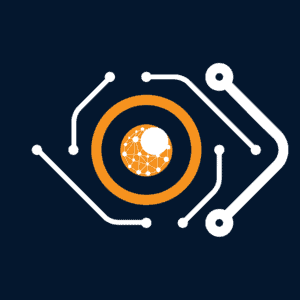In the news this week, the AI revolution is upon us, creating a tsunami of change that is sweeping through virtually every sector of the economy, but is the human brain-scale AI Supercomputer Is coming?
Welcome to The Digital Eye, your weekly roundup of the latest technology news.
Our team of experts have scoured the internet for the most exciting and informative articles so that you can stay up-to-date on all things digital, data, blockchain, AI & analytics.
This week’s the Top Reads:
- Quantum computing – What you need to know
- AI is thriving on and driving the edge
- Meta helps measure AI model uncertainty
- 3 big problems with datasets in AI and machine learning
- The many faces of Artificial Intelligence
Bonus Article:
- How Blockchain Technology is Transforming the Insurance Industry
We hope you find this information valuable and would appreciate your help in sharing it with others who may also be interested.
Quantum computing – What you need to know
Diagram illustrates how start-up activity & investments in quantum computing have skyrocketed since 2015
👁️🗨️ Read Article
“A burgeoning quantum-computing ecosystem and emerging business use cases promise to create significant value for industries—if executives prepare now.
Accelerating advances in quantum computing are serving as powerful reminders that the technology is rapidly advancing toward commercial viability. In just the past few months, for example, a research center in Japan announced a breakthrough in entangling qubits (the basic unit of information in quantum, akin to bits in conventional computers) that could improve error correction in quantum systems and potentially make large-scale quantum computers possible.1 And one company in Australia has developed software that has shown in experiments to improve the performance of any quantum-computing hardware.2”
shared by @McKinsey
AI is thriving on and driving the edge
“Virtually every function that enters the digital ecosphere will be empowered by AI before long.”
👁️🗨️ Read Article
“Connected devices and instant mobile access to data is a common facet of modern life, but the fact is that we’ve only just begun this transition to a digital universe. In the near future, autonomous cars will be buzzing through our streets, everything from our shoes to our eyeglasses and even our own body parts will be connected, and digital agents will be assisting us at every turn, and cataloging everything we do.”
shared by @VentureBeat
Meta helps measure AI model uncertainty
Bean Machine lets data scientists model directly whilst it does the probabilistic modelling, inferring possible distributions for predictions.
👁️🗨️ Read Article
“Meta (formerly Facebook) this week announced the release of Bean Machine, a probabilistic programming system that ostensibly makes it easier to represent and learn about uncertainties in AI models. Available in early beta, Bean Machine can be used to discover unobserved properties of a model via automatic, “uncertainty-aware” learning algorithms.”
shared by @VentureBeat
3 big problems with datasets in AI and machine learning
1. The training dilemma
2. Issues with labeling
3. A benchmarking problem
Scientists must acknowledge both quality and societal impact of datasets.
👁️🗨️ Read Article
“Datasets fuel AI models like gasoline (or electricity, as the case may be) fuels cars. Whether they’re tasked with generating text, recognizing objects, or predicting a company’s stock price, AI systems “learn” by sifting through countless examples to discern patterns in the data. For example, a computer vision system can be trained to recognize certain types of apparel, like coats and scarfs, by looking at different images of that clothing.”
shared by @VentureBeat
The many faces of Artificial Intelligence
“Performing DL and ML can greatly benefit from starting at the edge, because it can reduce the amount of data sent to a central system.”
👁️🗨️ Read Article
“Deep learning models owe their initial success to large servers with large amounts of memory and clusters of GPUs. The promises of deep learning gave rise to an entire industry of cloud computing services for deep neural networks. Consequently, very large neural networks running on virtually unlimited cloud resources became very popular, especially among wealthy tech companies that can foot the bill.”
shared by @bdtechtalks
Bonus Article
How Blockchain Technology is Transforming the Insurance Industry
@Gartner_inc – blockchain estimated to be more heavily adopted by 2023 & lead to $3.1 trillion in new business value by 2030.
👁️🗨️ Read Article
“Blockchain innovation is disrupting the insurance industry. And, for good!
As per a report by Markets and Markets, the global market for blockchain in insurance is expected to reach USD 1,393.8 million by 2025 from USD 64.50 million in 2018, at a CAGR of 84.9%.”


 The DiGITAL EYE
The DiGITAL EYE